


ชื่อภาษาอังกฤษ | Mangosteen (Mung-kud)
ชื่อวิทยาศาสตร์ | Garcinia mangostana Linn.
ฤดูกาลของผลไม้ (ช่วงเดือน) :มิถุนายน
ผล มีลักษณะทรงกลมๆ ผิวเปลือกแข็งหนา ผลมีกลีบเลี้ยงบนหัว คล้ายมงกฏ ผลอ่อนมีสีเขียว ผลสุกมีสีม่วงปนแดง มียางข้นสีเหลือง เนื้อในมีสีขาวขุ่น แยกอยู่เป็นกลีบ จะมีเมล็ดสีน้ำตาลอ่อน อยู่ข้างในเนื้อ มีเนื้อนุ่มชุ่มน้ำ มีรสชาติหวานเย็น มีกลิ่นหอม
ข้อมูลโภชนาการ |
|---|
|
หนึ่งหน่วยบริโภค : 100 กรัม (g) |
|
คุณค่าทางโภชนาการต่อหนึ่งหน่วยบริโภค พลังงานทั้งหมด 77 kcal |
|
ร้อยละของปริมาณที่แนะนำต่อวัน * |
|
Carbohydrate 17.7 g 7.53% |
|
Dietary Fiber 1.6 g 6.4% |
|
Total Fat 0.06 g 0.08% |
|
Protein 0.5 g 0.82% |
|
Sugars 17.34 g 26.68% |
|
|
|
Calcium 0.5% |
|
Copper 3.69% |
|
Iron 3.94% |
|
Magnesium 1.72% |
|
Niacin 0.63% |
|
Phosphorus 2% |
|
Potassium 0.71% |
|
Vitamin B2 4.62% |
|
Sodium 0.08% |
|
Vitamin B1 7.5% |
|
Vitamin C 5% |
|
Zinc 0.59% |
|
|
|
* ร้อยละของปริมาณที่แนะนำต่อวัน หมายถึง สารอาหารที่ได้รับจากการกินครั้งนี้ คิดเป็นสัดส่วนเท่าใดของที่เราควรจะได้รับต่อวัน เช่น ปริมาณคาร์โบไฮเดรตที่ควรได้รับต่อวัน คือ 300 กรัม จากตัวอย่าง คือ ผลไม้ 100 กรัม (g) ให้คาร์โบไฮเดรต 22 กรัม คิดเป็น 7% ของปริมาณที่ควรได้รับ ดังนั้นเราต้องกินเพิ่มอีก 93% จากอาหารอื่น |
คลิกที่ภาพเพื่อดูภาพขนาดใหญ่
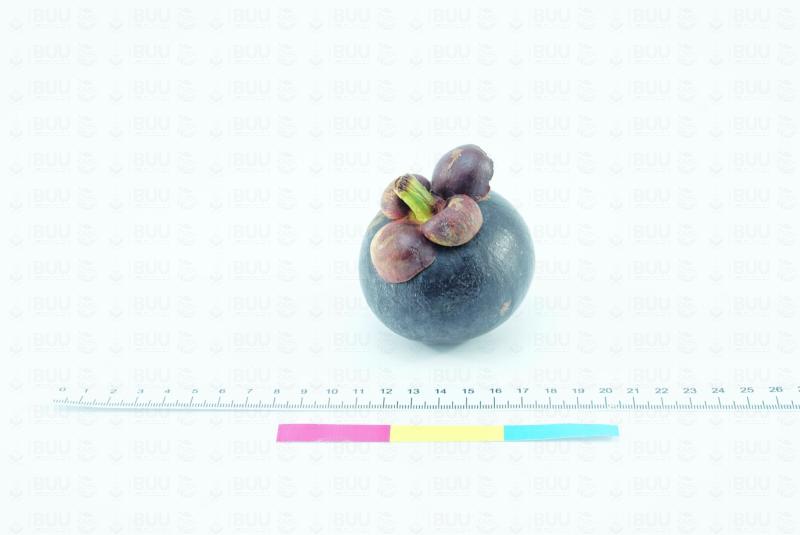

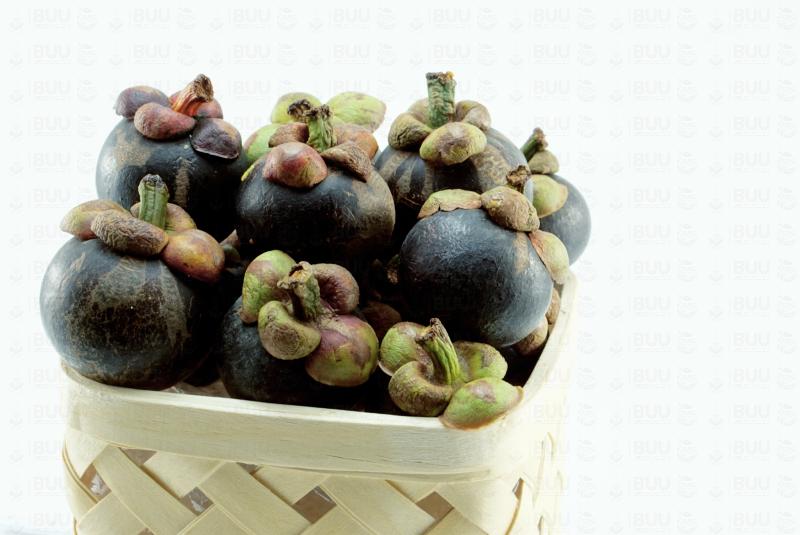
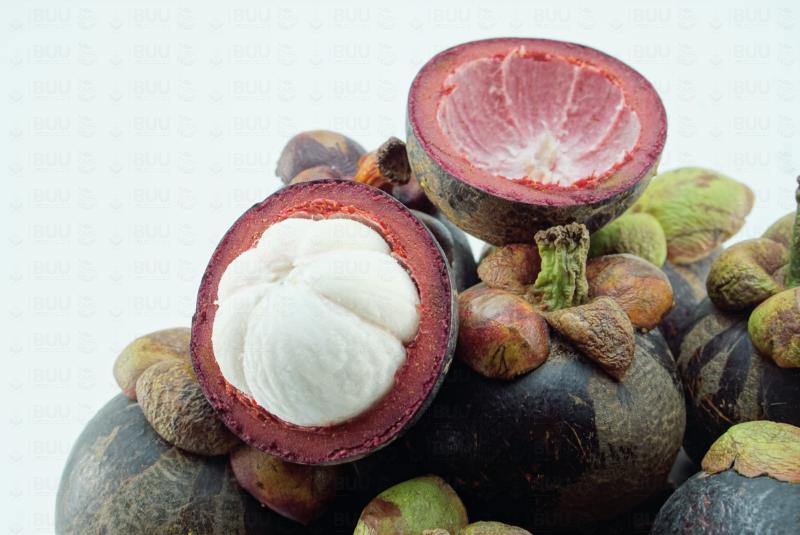
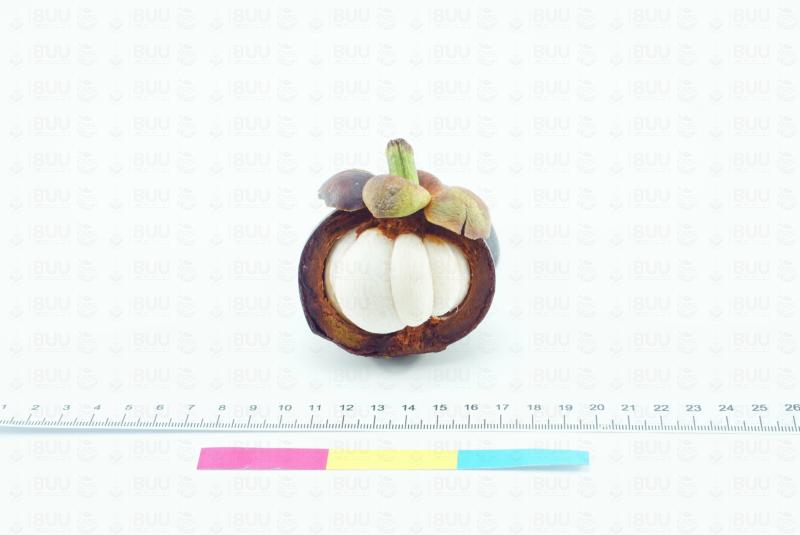
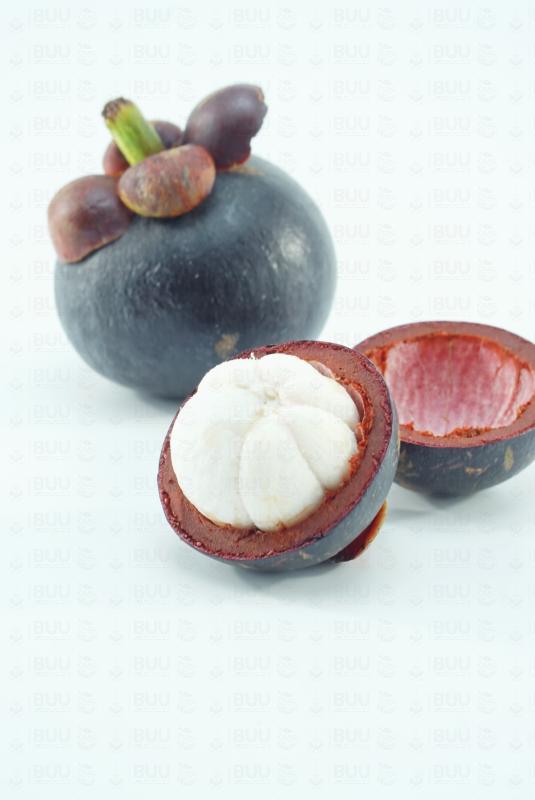



แผนภูมิเรดาร์ (Radar chart) หรือ แผนภูมิใยแมงมุม (Spider chart) ใช้แสดงการเปรียบเทียบระดับปริมาณสารอย่างน้อย 1 ชนิด โดยแต่ละมุมจะแสดงสาร 1 ชนิด และสามารถนำมาใช้ในการเปรียบเทียบปริมาณสารชนิดเดียวกันในผลไม้หลายชนิดพร้อมกันได้ คู่มือ
การปรับบรรทัดฐาน (Normalization) ด้วยวิธี Rescaling หรือ Min-Max Normalization เพื่อปรับช่วงข้อมูลให้อยู่ในช่วง [0, 1] ด้วยการนำค่าข้อมูลนั้น ลบด้วยค่าที่น้อยที่สุด (Min) ของมัน แล้วหารด้วยช่วงของข้อมูลนั้น (Max – Min) คู่มือ
| Ash |
| Carbohydrate available |
| Dietary fibre |
| Energy by calculation |
| Fat total |
| Protein total |
| Sugars total |
| Calcium |
| Copper |
| Iron |
| Magnesium |
| Phosphorus |
| Potassium |
| Sodium |
| Zinc |
| Niacin |
| Riboflavin |
| Thiamin |
| Vitamin C |
| anthocyanins |
| carotenoids |
| Flavonoids |
| Polyphenols |
| Phenolics |
| β-mangostin |
| α-mangostin |
| Tannins |
| γ-mangostin |
| anthocyanins |
- Kunchit Judprasong, Prapasri Puwastien, Nipa Rojroongwasinkul, Anadi Nitithamyong, Piyanut Sridonpai, Amnat Somjai. Institute of Nutrition, Mahidol University (2015). Thai Food Composition Database, Online version 2, September 2018, Thailand. [Link]
- Karunakaran T, Ee GCL, Ismail IS, Mohd Nor SM & Zamakshshari NH. (2018). Acetyl- and O-alkyl- derivatives of β-mangostin from Garcinia mangostana and their anti-inflammatory activities. Nat Prod Res, 32(12), 1390-1394. doi: 10.1080/14786419.2017.1350666. [Link]
- Ling, L. T., Radhakrishnan, A. K., Subramaniam, T., Cheng, H. M., & Palanisamy, U. D. (2010). Assessment of antioxidant capacity and cytotoxicity of selected Malaysian plants. Molecules (Basel, Switzerland), 15(4), 2139–2151. https://doi.org/10.3390/molecules15042139 [Link]
- Haruenkit, R., Poovarodom, S., Leontowicz, H., Leontowicz, M., Sajewicz, M., Kowalska, T., ... & Gorinstein, S. (2007). Comparative study of health properties and nutritional value of durian, mangosteen, and snake fruit: experiments in vitro and in vivo. Journal of Agricultural and Food Chemistry, 55(14), 5842-5849. [Link]
- Pothitirat, W., Chomnawang, M. T., Supabphol, R., & Gritsanapan, W. (2009). Comparison of bioactive compounds content, free radical scavenging and anti-acne inducing bacteria activities of extracts from the mangosteen fruit rind at two stages of maturity. Fitoterapia, 80(7), 442-447. [Link]
- Sukatta, U., Takenaka, M., Ono, H., Okadome, H., Sotome, I., Nanayama, K., ... & Isobe, S. (2013). Distribution of major xanthones in the pericarp, aril, and yellow gum of mangosteen (Garcinia mangostana linn.) fruit and their contribution to antioxidative activity. Bioscience, biotechnology, and biochemistry, 77(5), 984-987. [Link]
- Hiranrangsee, L., Kumaree, K. K., Sadiq, M. B., & Anal, A. K. (2016). Extraction of anthocyanins from pericarp and lipids from seeds of mangosteen (Garcinia mangostana L.) by Ultrasound-assisted extraction (UAE) and evaluation of pericarp extract enriched functional ice-cream. Journal of food science and technology, 53(10), 3806-3813. [Link]
- Ali Hassan, S. H., Fry, J. R., & Abu Bakar, M. F. (2013). Phytochemicals content, antioxidant activity and acetylcholinesterase inhibition properties of indigenous Garcinia parvifolia fruit. BioMed research international, 138950. https://doi.org/10.1155/2013/138950 [Link]
- คณะกรรมการและคณะทำงานปรับปรุงข้อกำหนดสารอาหารที่ควรได้รับประจำวันสำหรับคนไทย. (2563). ปริมาณสารอาหารอ้างอิงที่ควรได้รับประจำวันสำหรับคนไทย พ.ศ. 2563 (พิมพ์ครั้งที่ 1). สำนักโภชนาการ กรมอนามัย กระทรวงสาธารณสุข. [Link]